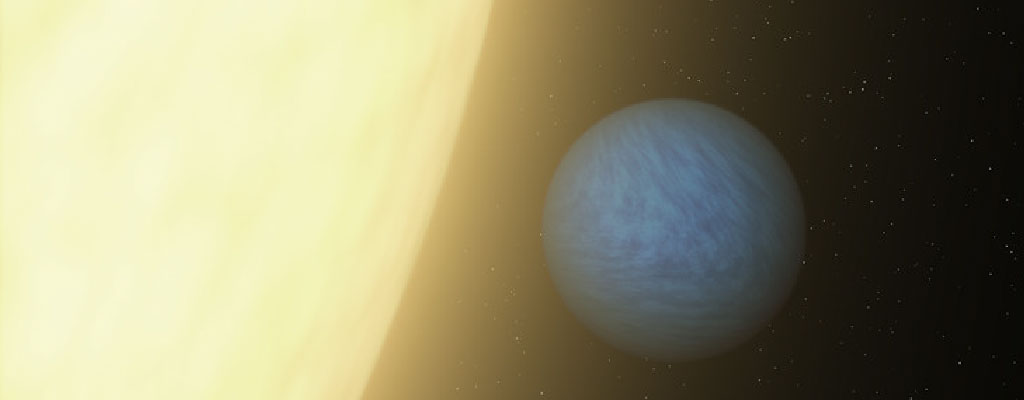Research conducted by:
Eric Ford, Professor of Astronomy and Astrophysics and ICDS Co-Hire
Tags:
astronomy machine learning
Research Summary:
With billions of galaxies in the Universe and billions of stars in those galaxies, finding an Earth-like planet orbiting a Sun-like star makes finding a needle in a haystack sound easy. However, astronomers, using a machine learning technique called hierarchical Bayesian modeling, to better understand the likelihood of potential Earths orbiting stars that are similar to the Sun. The model may help astronomers find rocky planets that – if our own planet can be used as a guide – could support life. The scientists used a catalog of data from NASA’s Kepler mission and the second data release for Gaia, the European Space Agency’s one billion star survey mission.
How Roar played a role in this research:
Computations were run on the Roar system.
|
Article Title: |
Occurrence Rates of Planets Orbiting FGK Stars: Combining Kepler DR25, Gaia DR2, and Bayesian Inference |
|---|---|
|
Published In: |
The Astronomical Journal |
|
Abstract: |
We characterize the occurrence rate of planets, ranging in size from 0.5 to 16 R ⊕, orbiting FGK stars with orbital periods from 0.5 to 500 days. Our analysis is based on results from the “DR25” catalog of planet candidates produced by NASA’s Kepler mission and stellar radii from Gaia “DR2.” We incorporate additional Kepler data products to accurately characterize the efficiency of planets being recognized as “threshold crossing events” by Kepler’s Transiting Planet Search pipeline and labeled as planet candidates by the robovetter. Using a hierarchical Bayesian model, we derive planet occurrence rates for a wide range of planet sizes and orbital periods. For planets with sizes 0.75-1.5 R ⊕ and orbital periods of 237-500 days, we find a rate of planets per FGK star of <0.27 (84.13th percentile). While the true rate of such planets could be lower by a factor of ∼2 (primarily due to potential contamination of planet candidates by false alarms), the upper limits on the occurrence rate of such planets are robust to ∼10%. We recommend that mission concepts aiming to characterize potentially rocky planets in or near the habitable zone of Sun-like stars prepare compelling science programs that would be robust for a true rate in the range f R,P = 0.03-0.40 for 0.75-1.5 R ⊕ planets with orbital periods in 237-500 days, or a differential rate of {{{Γ }}}\oplus \equiv ({d}2f)/[d({ln}P) d({ln}{R}p)]= 0.06-0.76. View article on publisher's website |

